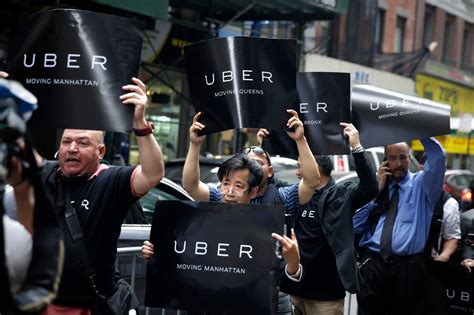In a highly contentious move, Uber has begun locking out drivers mid-shift in New York City in a bid to lower their minimum pay obligations. The ride-sharing giant explains this decision as a reaction to regulations that require them to pay for idle time drivers accumulate between rides. This approach has intensified existing debates regarding the fluctuating definition and expectations around gig economy jobs. At the heart of the debate is whether Uber drivers want the flexibility of gig work or the stability of a full-time job.
Central to the issue is the inherent contradiction between what drivers and companies like Uber seek from gig work. On the one hand, drivers are attracted to the flexible nature of these jobs. It allows them to work at their own pace and schedule, an appealing proposition for many in today’s increasingly fast-paced world. However, as commentator elmerfud pointed out in the discussions, flexibility in gig work comes with its own set of challenges. Drivers who opted for gig work for its flexibility are now finding themselves wanting more stable income and predictable work hours, which seem almost contradictory to the essence of gig work itself.
The situation gets even more complicated when examining the leasing programs that these companies offer. As highlighted by quantified, Uber’s vehicle leasing program toes the line between gig work and traditional employment. Drivers leasing their cars directly from Uber might face unique challenges when locked out mid-shift, yet this leasing option is just that—an option. It’s not a requirement for joining Uber but a convenience that has parallels in other industries, such as mechanics leasing tools from employers.
One significant criticism comes from jkaplowitz who suggests that Uber drivers should be able to negotiate minimum shift durations, similar to how independent contractors operate in other spheres. This perspective highlights the imbalance of power in the negotiation process between individual drivers and giant corporations like Uber. Without collective bargaining or union support, most drivers lack the leverage to negotiate better terms, leading to policies that often don’t favor them. It’s a stark reminder of the need for organized labor movements or reforms in labor laws to better protect gig economy workers.
The analogy some commenters draw between Uber drivers and day laborers also merits attention. It’s evident in statements like “If you want a steady job get a steady job,” echoing a sentiment that drivers seeking stability might be barking up the wrong gig economy tree. However, this view simplifies a complex problem. Many people turn to gig work out of necessity rather than choice, and suggesting a simple switch to more stable employment overlooks the larger economic constraints faced by these individuals. As FrustratedMonky emphasized, in a capitalistic system where human labor is treated as a market commodity, the value and pay of labor fluctuate with supply and demand. Only policy changes ensuring more equitable treatment of workers can address the root causes of such instability.
To resolve these issues, both structural changes in regulations and cultural shifts in understanding gig economy jobs are required. Uber’s approach to managing driver supply and demand through technological and algorithmic adjustments showcases their prioritization of efficiency and cost-cutting over driver welfare. This balance of power needs to be re-examined to prevent exploitation and ensure fair compensation. Cooperative efforts by ride-sharing companies to work with regulatory bodies, rather than against them, might pave the way for more fair and sustainable solutions.
In conclusion, the ongoing disputes between Uber drivers and the company are emblematic of larger systemic challenges in the gig economy. They reveal a need to re-evaluate how flexibility and stability are balanced in modern employment. As we move forward, it is crucial that both legislative frameworks and corporate policies evolve to protect the rights and livelihoods of those working within these burgeoning sectors.


Leave a Reply